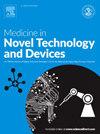MDFSBP:利用光容积脉搏波(PPG)估算血压的多角度差分特征空间框架
Q3 Medicine
引用次数: 0
摘要
持续、准确的血压监测对个体化高血压治疗至关重要。然而,现有的方法大多集中在BP的绝对估计上,对BP变化的关注有限。为了解决这一限制,我们提出了一个名为多视角差分特征空间(MDFSBP)的新框架,用于利用光容积脉搏波(PPG)信号进行无口BP估计。MDFSBP提取三个视角差分特征:基于时间和兴趣点的特征、频域特征和生理统计特征。然后,自适应多视角差分特征映射模块(MDFMM)集成重构正则化、趋势感知分类和自加权对比学习,增强特征表示,增强特征与BP变化之间的关联。最后,基于automl的回归管道自动化模型优化,提高预测精度和部署效率。为了更好地测试模型捕获BP变化的能力,我们引入了一种新的异常感知分类度量。我们在Mindray和MIMIC数据集上展示了最先进(SOTA)方法的BP估计性能。在Mindray数据集上,模型对收缩压的回归误差为0.17±5.17 mmHg,对舒张压的回归误差为0.05±3.29 mmHg,分类准确率和f1评分分别达到85.25%和87.50%。在MIMIC数据集上,收缩压和舒张压的分类精度分别为- 0.09±5.70 mmHg和0.12±4.27 mmHg,分类精度和f1评分分别为72.84%和70.66%。这些结果强调了所提出的框架在临床和可穿戴医疗系统中用于无创、实时和连续血压监测的有效性、稳健性和普遍性。©2001爱思唯尔科学版权所有本文章由计算机程序翻译,如有差异,请以英文原文为准。
MDFSBP: A multi-perspective differential feature space framework for estimating blood pressure using photoplethysmography (PPG)
Continuous and accurate blood pressure (BP) monitoring is critical for personalized hypertension management. However, most existing methods focus on absolute BP estimation, with limited attention to BP changes. To address this limitation, we propose a novel framework named Multi-Perspective Differential Feature Space (MDFSBP) for cuffless BP estimation using photoplethysmography (PPG) signals. MDFSBP extracts three perspective differential features: time-based and points-of-interest features, frequency-domain features, and physiological statistical features. Then, an adaptive Multi-Perspective Differential Feature Mapping Module (MDFMM) integrates reconstruction regularization, trend-aware classification, and self-weighted contrastive learning to enhance feature representation and strengthen the association between features and BP changes. Finally, an AutoML-based regression pipeline automates model optimization, improving predictive accuracy and deployment efficiency. To better test the model's capability in capturing BP changes, we introduce a novel abnormality-aware classification metric. We demonstrate BP estimation performance over state-of-the-art (SOTA) methods on both the Mindray and MIMIC datasets. On the Mindray dataset, the model achieves a regression error of 0.17 ± 5.17 mmHg for SBP and 0.05 ± 3.29 mmHg for DBP, with classification accuracy and F1-score reaching 85.25 % and 87.50 %, respectively. On the MIMIC dataset, it achieves −0.09 ± 5.70 mmHg for SBP and 0.12 ± 4.27 mmHg for DBP, with the classification accuracy and F1-score of 72.84 % and 70.66 %, respectively. These results highlight the effectiveness, robustness, and generalizability of the proposed framework for non-invasive, real-time, and continuous BP monitoring in both clinical and wearable healthcare systems.
© 2001 Elsevier Science. All rights reserved
求助全文
通过发布文献求助,成功后即可免费获取论文全文。
去求助
来源期刊

Medicine in Novel Technology and Devices
Medicine-Medicine (miscellaneous)
CiteScore
3.00
自引率
0.00%
发文量
74
审稿时长
64 days
 求助内容:
求助内容: 应助结果提醒方式:
应助结果提醒方式:


